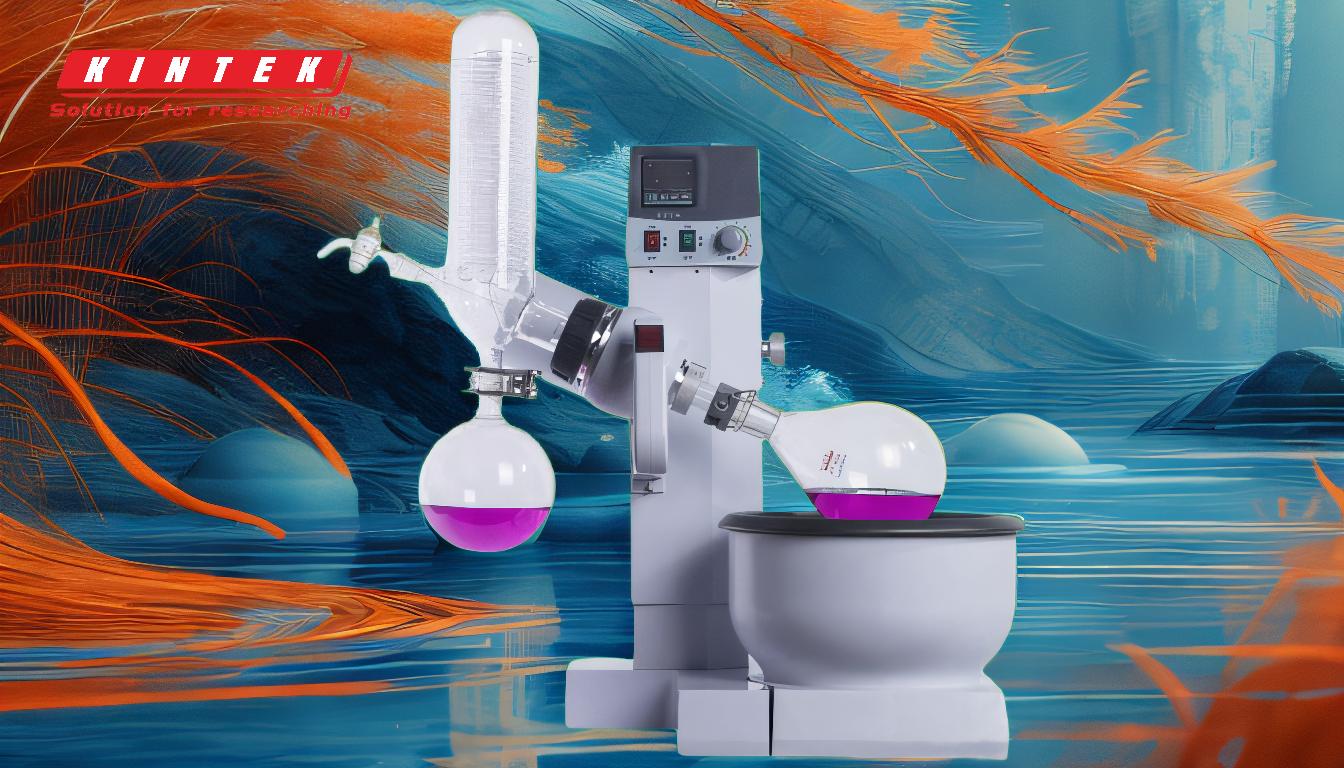Rotary evaporation is primarily designed to remove solvents from samples by increasing the rate of evaporation under reduced pressure and controlled temperature. While it is highly effective for concentrating solutions and recovering solvents, it is not inherently a purification technique. Purification typically involves separating and isolating specific components from a mixture, which rotary evaporation does not directly achieve unless the target compound has significantly different volatility compared to the solvent. However, in cases where the solvent is the only volatile component, rotary evaporation can indirectly aid purification by isolating the non-volatile compounds. Below, the key points are explained in detail.
Key Points Explained:

-
Primary Function of Rotary Evaporation:
- Rotary evaporation is designed to remove solvents from samples by creating a thin film of the solution in a rotating flask, which increases the surface area for evaporation. This process is enhanced by applying reduced pressure and controlled heat, making it efficient for solvent removal.
- It is widely used in laboratories for concentrating solutions, recovering solvents, and isolating non-volatile compounds.
-
Does Rotary Evaporation Purify?:
- Rotary evaporation is not inherently a purification technique. Its primary purpose is to separate volatile solvents from less volatile compounds.
- Purification involves isolating a specific compound from a mixture, which requires techniques like distillation, chromatography, or crystallization. Rotary evaporation alone cannot achieve this unless the target compound has a significantly different volatility compared to the solvent.
-
Indirect Role in Purification:
- In cases where the solvent is the only volatile component, rotary evaporation can indirectly aid purification by removing the solvent and leaving behind the non-volatile compounds. For example, if a solution contains a non-volatile solute dissolved in a volatile solvent, rotary evaporation can isolate the solute.
- However, if the mixture contains multiple volatile components with similar boiling points, rotary evaporation will not effectively separate them.
-
Limitations in Purification:
- Rotary evaporation is ineffective for separating components with similar volatilities or those that form azeotropes (mixtures that evaporate together at a constant boiling point).
- It is not suitable for purifying compounds that degrade under the applied heat or vacuum conditions.
-
Applications in Solvent Removal and Concentration:
- Rotary evaporation is widely used in organic, inorganic, and polymeric chemistry for solvent removal and sample concentration. It is particularly useful in pharmaceutical, biological, and food industries for processing large volumes of solvents.
- It is also employed in small-scale experiments and pilot production for its efficiency and gentle handling of heat-sensitive materials.
-
Complementary Techniques for Purification:
- To achieve purification, rotary evaporation is often used in conjunction with other techniques. For example:
- After rotary evaporation, further purification can be achieved using column chromatography, recrystallization, or fractional distillation.
- In some cases, rotary evaporation is used as a preliminary step to concentrate a mixture before applying more selective purification methods.
- To achieve purification, rotary evaporation is often used in conjunction with other techniques. For example:
-
Key Considerations for Equipment Purchasers:
- When purchasing a rotary evaporator, consider its compatibility with the solvents and compounds you work with. Ensure it can handle the required temperature and pressure ranges.
- Evaluate the equipment's efficiency in solvent recovery and its ability to handle heat-sensitive materials.
- For purification purposes, consider integrating the rotary evaporator with other purification techniques to achieve the desired results.
In summary, while rotary evaporation is not a purification technique per se, it plays a crucial role in solvent removal and sample concentration, which can indirectly support purification processes. For effective purification, it should be combined with other methods tailored to the specific properties of the compounds being separated.
Summary Table:
| Aspect | Details |
|---|---|
| Primary Function | Removes solvents by increasing evaporation under reduced pressure and heat. |
| Purification Capability | Not inherently a purification technique; separates volatile solvents. |
| Indirect Purification Role | Isolates non-volatile compounds when the solvent is the only volatile component. |
| Limitations | Ineffective for components with similar volatilities or azeotropes. |
| Applications | Widely used in labs for solvent removal, concentration, and heat-sensitive materials. |
| Complementary Techniques | Often paired with chromatography, distillation, or crystallization for purification. |
| Key Purchasing Considerations | Ensure compatibility with solvents, temperature, and pressure requirements. |
Looking for the right rotary evaporator for your lab? Contact us today to find the perfect solution!











